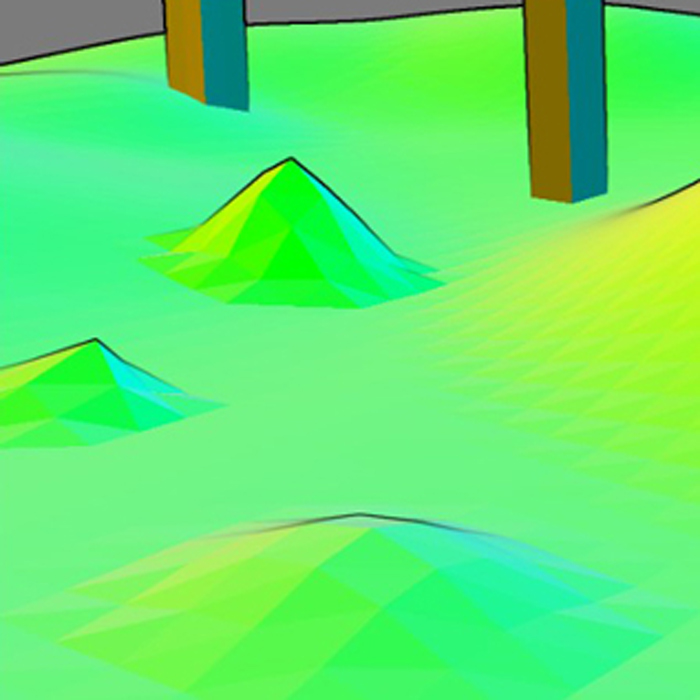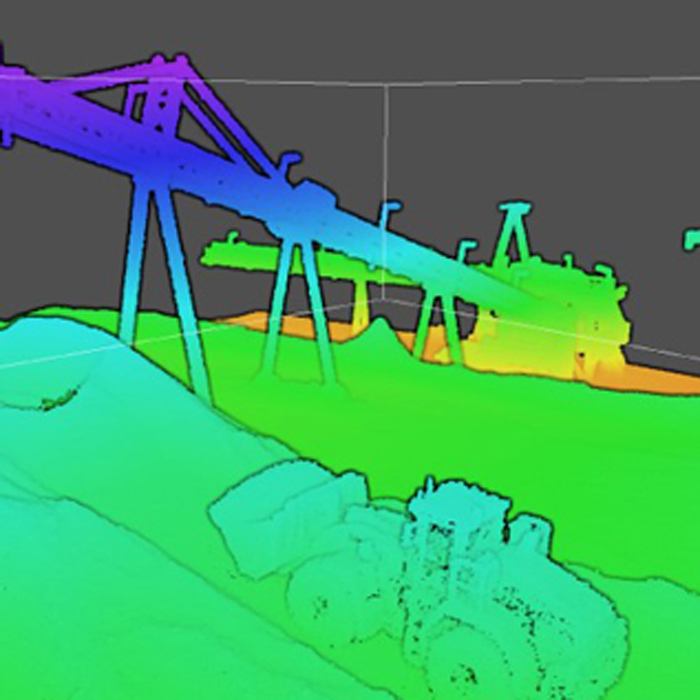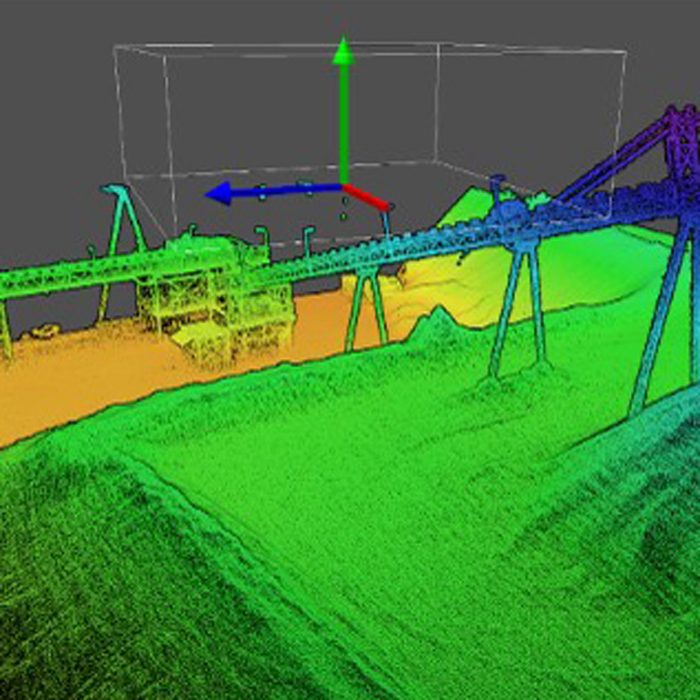March 2023 Issue Index
Perceiving new possibilities
Improved depth perception in visualising software imagery has transitioned from Maptek experiment into incorporation within current point cloud modelling applications.
The new shading technique better simulates real world lighting, making it much easier to interpret 3D data such as point clouds captured by Maptek laser scanners.
Since the depth information is retained for every pixel in the point cloud, those pixels can have extra shading applied in a post-processing step. This helps delineate objects and geometry.
Initially prototyped by graphics developers in Maptek 10% time, the ‘eye-dome lighting’ experimental work was reviewed and endorsed internally before being added to the development roadmap.
Software Engineers Ryan Marker and Dallas McNeill, who led the project, explained how it works.
‘Think of the classic art exercise, where taking a flat circle and adding shading will turn it into a sphere,’ said Marker. ‘Incorporating this enhancement to the lighting in the image brings the scene to life.’
McNeill was able to quickly build a prototype for experimentation and to reference when implementing in Maptek solutions. This allowed the developer teams to determine early on what worked and what didn’t, and rapidly evolve the prototype.
Maptek 10% time was instrumental in the project success, allowing the developers to quickly progress from idea to proof of concept, with the wider development team providing feedback along the way.
Timing was also key, as the underlying viewing infrastructure was now available, thanks to an earlier project that provided higher quality anti-aliasing for Maptek BlastLogic.



Launching off this feature meant that eye-dome lighting could be incorporated into Maptek PointStudio reasonably quickly for testing. This in turn inspired the team who were devising ways they could improve the Maptek FieldHHC laser scanner user interface.
The project threw up several challenges. The most difficult was maintaining consistency of the effect, for example, keeping the shading similar for large as well as small data, or across orthographic/perspective projections. Feedback from the product team spurred many tweaks to the algorithm.
While users can customise the shading effect, Maptek was keen to avoid the need to adjust the settings for every new piece of data.
Eye-dome lighting makes it dramatically easier to interpret 3D data on a screen, adding depth to what would otherwise be a flat image.
Marker said that they were surprised at how impactful eye-dome lighting can be for data visualisation, and highlighted the importance of experimentation.
‘I encourage anyone to engage with experimentation. The key to success is not to force an idea but to wait for inspiration. Start with an area you’re passionate about or a design concept of how to implement something – it’s really satisfying when it works.’
Maptek introduced 10% time to champion staff to explore different approaches and experiment with new ideas. The initiative aligns with one of our principles, Create Tomorrow, by encouraging change and new thinking to solve industry problems.
- Maptek 10% time champions staff to explore different approaches and experiment with new ways to solve industry problems
- Graphics developers quickly prototyped their eye-dome lighting work to gather valuable feedback from other Maptek teams
- Enhanced visualisation of 3D point cloud data in the field will soon be available for users of Maptek PointStudio and FieldHHC solutions

